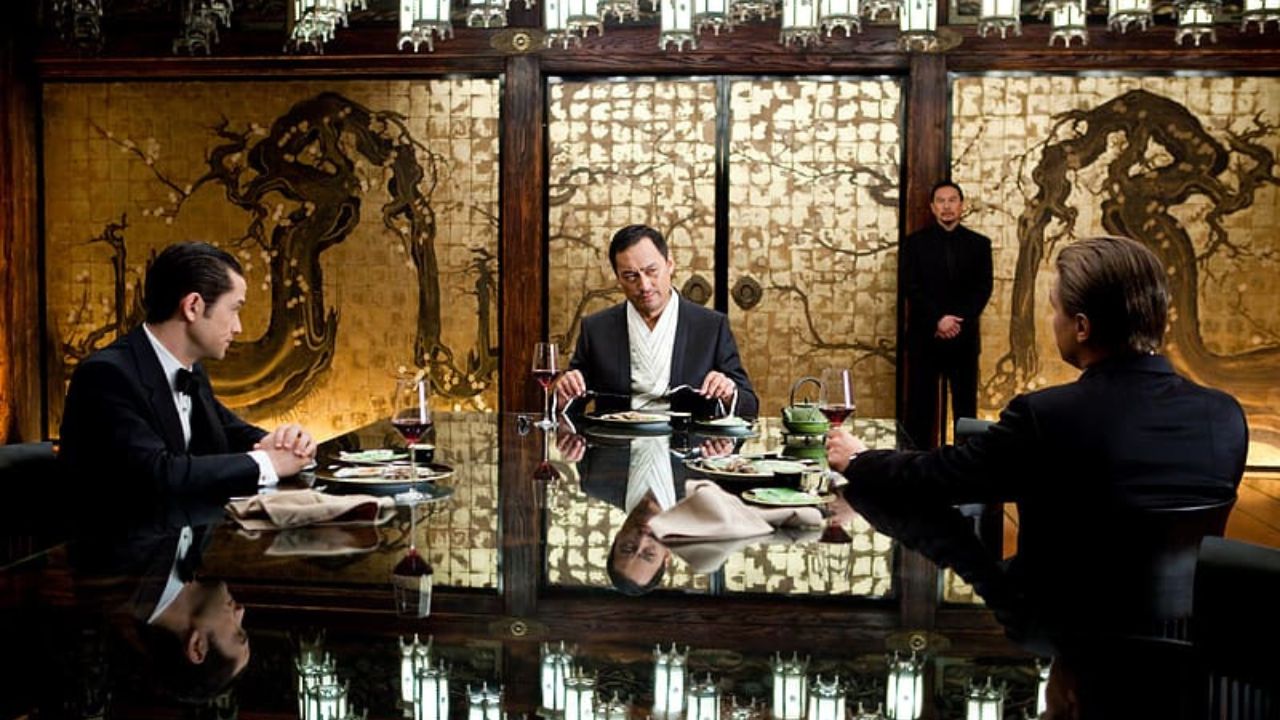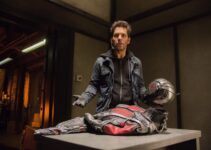This post includes a brief summary and an explanation about the ending of the film Inception (2010). Beware of spoilers.
Directed by Christopher Nolan, the 2010 sci-fi action film stars Leonardo DiCaprio as Dom Cobb, Ken Watanabe as Saito and Marion Cotillard as Mal.

The film “Inception” is about a team of thieves who can enter people’s dreams. Dom Cobb is a skilled extractor and the leader of the team. One day, the team attempts to extract information from a Japanese businessman named Saito, but they fail because Cobb’s late wife, Mal, appears in the dream and sabotages their mission.
Note: For those who need a “refresh”, here is another article containing a more in-depth explanation about dream levels, totems and kicks in “Inception”.
What Happens in “Inception”? (Plot Explained)
Their latest mission was actually a test. Saito wants Cobb and his team to perform inception on his competitor, Robert Fischer, the heir to Maurice Fischer’s empire. The businessman intends to make his rival dissolve his father’s company by planting that idea in his mind. In exchange, Saito will help Cobb clean his criminal record so he can return to his children.
For the inception mission, Cobb recruits three other members for his team. Eames is a forger, meaning he can impersonate anyone in the dream. Then there is Yusuf, a skilled chemist who can create powerful sedatives. Meanwhile, Ariadne is an architect, someone who can design the dream world.
Cobb designs a three-level dream plan where each level is deeper and slower than the previous one. They are going to plant the idea in Fischer’s subconscious on the third level. After kidnapping Fischer on a flight, the team puts him and themselves to sleep. Then they enter the first level of the dream.
As the team goes through with the plan, they meet several obstacles. Fischer is not an easy target because his mind is trained to defend against intruders. Meanwhile, Saito is injured. As the team pretends to be Fischer’s allies, they move to the second level of the dream. After gaining Fischer’s trust, the team moves to the third level of the dream.
Just when Robert realizes what his father’s final wish was, Mal appears again and sabotages the team’s mission. Meanwhile, Robert and Saito die in the dream. This leads their subconscious to enter Limbo, an unstructured and infinite dream world. Ariadne rescues Robert and Cobb stays a little longer to look for Saito.
Yusuf and Arthur start performing “kicks” on their respective levels in order to wake their team members up. After a while, Cobb finds Saito, who is now a much older man due to the time dilation. Together, they remind each other of their agreement.
The Ending of “Inception” Explained
The ending of “Inception” shows all the team members and Robert Fischer waking up on the airplane. Saito honours his promise and the authorities drop the charges against Cobb. The latter safely returns home and reunites with his children. Cobb pulls out his totem, the spinning top, to work, but before checking on it, he walks away and embraces his children.
What is the significance of the spinning top?
The spinning top in Inception’s ending is a symbol of the main character’s struggle to distinguish reality from dreams. Cobb uses his totem to test if he is awake or dreaming. The spinning top is an object that behaves differently in the real world and the dream world.
In the final scene, Cobb spins the top and walks away to join his children without waiting to see if it falls or not. This suggests that Cobb has finally accepted his current reality, whatever it may be. In a way, Cobb chose to be happy with his family rather than obsess over what was real or not.

Having said that, it’s up to the audience to decide what really happened at the end of “Inception”. There are two prevalent theories about the ending of “Inception”: the “reality theory” and the “dream theory”.
“Inception” Ending Theories
So is Cobb still dreaming or not? Some people believe that Cobb escaped and woke up. Meanwhile, there are other viewers who believe Cobb is still trapped in a dream. Some even argue that Cobb’s true totem is his wedding ring, which only appears when he is in a dream.
“The Reality Theory”
This theory argues that everything we see at the end of the film is actually happening and that Cobb has successfully reunited with his children. The evidence for this theory includes: Michael Caine’s character only appearing in the real parts of the film and Cobb not wearing his wedding ring in the final scenes.
“The Dream Theory”
In this theory, Cobb is still trapped in a dream, either by his own choice or his inability to “wake up”. When Mal was alive, she and Cobb spent many years together in Limbo. Being in a deep dream for too long caused Cobb’s wife to struggle to differentiate between dream and reality. This could be happening to Cobb, meaning that the ending scene is still part of his dream.
Christopher Nolan, the director, said himself that what “really” happened in the ending doesn’t matter. It’s all about the reality that one chooses to believe in, which is aligned with the film’s themes of dreams, reality and perception.
Final Thoughts
In my opinion, “Inception” is one of Christopher Nolan’s finest masterpieces. The premise is original and the director manages to explore the fascinating concept of lucid dreaming and its implications without alienating the audience.
“Inception” is a stunning display of creativity, an intelligent piece of art that challenges the audience to think while they are on the edge of their seat. The film is huge in pop culture and rightfully so, because of its originality and innovation, not to mention its ambition in filmmaking.
Unlike many, the ambiguous ending of “Inception” did not bother me. I thought it was appropriate and clever because it challenges the viewer to question and choose their own reality. In a way, what we believe becomes reality, which is what the film is also trying to suggest.
Since I’m a rather optimistic viewer, I like to believe that Cobb made it and reunited with his family in real life. I mean, why not? After all the trouble, I think the man deserved some “peace” and an opportunity to redeem himself. Also, I thought the “ring argument” was a very compelling one.
Overall, I believe “Inception” deserves all the hype and praise that it has received. It’s really a rare example of a film that can be both entertaining and thought-provoking. Not only that, but “Inception” also lingers with you long after you watch it.


